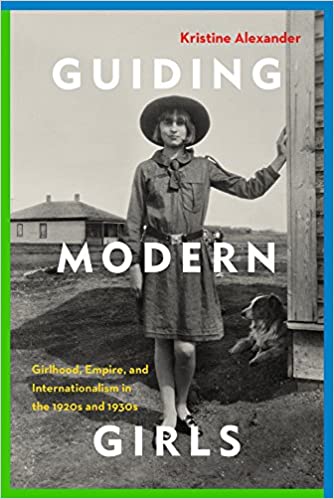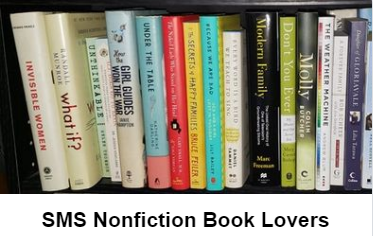A book review of Guiding Modern Girls: Girlhood, Empire, and Internationalism in the 1920s and 1930s by Kristine Alexander.
Stars: ****
UBC Press (2018)
Women’s Studies/Women in History
296 pages
Disclosure: I received a copy of this book in exchange for an honest review. This post contains affiliate links.
Summary: Across the British Empire and the world, the 1920s and 1930s were a time of unprecedented social and cultural change. Girls and young women were at the heart of many of these shifts. Out of this milieu, the Girl Guide movement emerged as a response to modern concerns about gender, race, class, and social instability. In this book, Kristine Alexander analyzes the ways in which Guiding sought to mould young people in England, Canada, and India. It is a fascinating account that connects the histories of girlhood, internationalism, and empire, while asking how girls and young women understood and responded to Guiding’s attempts to lead them toward a “useful” feminine future.
Guiding Modern Girls
I asked to review this book because I’ve been involved with Girl Guides of Canada in one way or another for the last 32 years. I heard other Girl Guide leaders talking about it so I searched it out.
My first impressions were that the book was a lot more intellectual than I first expected. However I thoroughly enjoyed it and learned a lot. I know Guiding in the 90s and 2000s mostly. Although we certainly learn about Guiding’s early days we didn’t get quite as thorough as this book does. So that’s why I still learned new things.
The book is well researched with 42 pages of notes and a 23 page bibliography. It’s important to note that the author is not a Girl Guide member. She works at the University of Lethbridge (Canada) as an assistant professor of history. She is also Canada Research Chair in Child and Youth Studies. However she does an amazing job of capturing what early Guiding was like.
Chapters
So the book is divided into 6 chapters:
- Guiding’s Beginnings: Victorian Antecedents and Early Twentieth-Century Growth
- Guiding Girls toward the Private Sphere: Training for Homekeeping, Mothercraft and Matrimony
- “We must Give the Modern Girl a Training in Citizenship”: Prepareing Girls for Political and Social Service
- Moulding Bodies and Identities in the Outdoors: Religion, Gender and Racial-National Narratives at Girl Guides camps
- The Mass Ornament: Rallies, Pageantry, Exercise and Drill
- Imperial and International Sisterhood: Possibilities and Limits
In the first chapter, the book covers how Scouting and Guiding came to be but that’s only a short part. It’s more about what was important to the founders and how Scouting and Guiding are different. Guiding started when the British Empire was in control of many countries. They clearly were trying to encourage English Whiteness.
In the second chapter, we see that Guiding was about creating future mothers, homemakers and wives. In the third chapter Guides are trained to be a good citizen and are taught politics and about service. I remember service being a big part of Guiding when I was a child too.
“In October 1922, Captain V. Daly of the 9th Leamington Guide Company described the Court of Honour (a monthly executive meeting of each Company’s Captains and Patrol Leaders) as a “governing body” that should be run “like a little parliament with the Captain as Prime Minister.”
pg 84
Chapter four talks about how Guiding was considered open to any religion but that they had to be willing to use God in the promise. That was not negotiable. It’s interesting to note that today, We use the words beliefs instead. It also talks about how back then, it was not LGBTQ+ supportive. Girls were trained to be a mother and wife to a husband. I’m proud to say that Girl Guides is an ally to the LGBTQ+ community now (or at least tries it’s hardest to be.)
Chapter five is about something I know less about because rallies, pageants and drills is not something we really do anymore in Guiding. Chapter six is about where Guiding was heading in the 30s and 40s.
Residential Schools
Something that shocked me and is important to note is that there were Girl Guide companies IN residential schools. Right now the news is full of stories about unmarked graves and even mass graves being unearthed at residential schools.
The Guide movement, through its companies in residential, day and industrial schools, was also part of this broader effort to eradicate Indigenous cultures in Canada. But, as Mary Jane McCallum shows, numerous First Nations girls used Guiding as “a means to practice ‘culturally related behaviours’ and … to continue distinct Aboriginal traditions.” Like the Six Nations girls who earned prizes for their needlework, many Indigenous Guides used the movement’s emphasis on handicrafts and “Indian lore” to create goods that they would also have produced in their own cultural environments. As McCallum argues, “Native and Inuit girls inverted and distorted [the movement’s assimilatory] aims, using the Girl Guide organization to renew rather than dissolve their traditions; and as a resource that supported rather than transformed their own distinct cultures.
pg 133
Final Thoughts
Overall this is a well thought out study of Girl Guiding in Canada, England and India. You will need silence and concentration to read it but it’s not boring. I learned a lot and I’m glad I read it. It’s not for every Girl Guide member of course. If you are interested in the history of Guiding and how it related to what was going on in the world, it’s a recommended read.
Buy Guiding Modern Girls at Amazon.com and help support the blog.
Find Guiding Modern Girls at Goodreads.









